Learn a new Ukulele chord every day of the year. The chord for March 2nd is Bb7. Using the root on string one from yesterday's Bb chord allows you to reuse the transposition chart or knowledge for the Bb7 shown today.
Learn a new Ukulele chord every day of the year. The chord for March 2nd is Bb7.
Using the root on string one from yesterday's Bb chord allows you to reuse the transposition chart or knowledge for the Bb7 shown today.
Today's Bb7, based on the open position A7 chord, is one of the four-seventh chords of the Big Six Jazz Chords series of lessons that form the foundation for ALL our 4-part contemporary chords — a.k.a. Jazz
chords.
For the month of March the rest of the chords are all movable Seventh chords and F7 with a lot of alterations. This is the realm of the jazz ukulele player. Except for March 24th's F7, one of the Open Position chords that was forgotten for January.
Movable Form Comparison
Using a Major movable form chord, based on the open-position A major chord. We can see that there it is simpley changing one note int he chord to derived additional minor and major based chords.






Notice the Root on string one (letter name of the chord) and fifth of the chord on string two does not change at all. And the b3, Eb on string three does not change for the minor-based chords. The Root and the Fifth (Power Tones) of chords built in thirds give a chord stability and a foundation to add the color to.
4-part, a.k.a.
JazzChords
Jazzchords for creating your 4-part, contemporary chord foundation and
Life Beyond the Third Fret.
Movable Form Chords
Today's chord, Bb7, is a Movable Form Chord based off the Open Position A.
Any chord chord can be transposed along the fingerboard.
Movable Ukulele Chords Lesson Series page.

 Understanding a Chord Diagram
Understanding a Chord Diagram
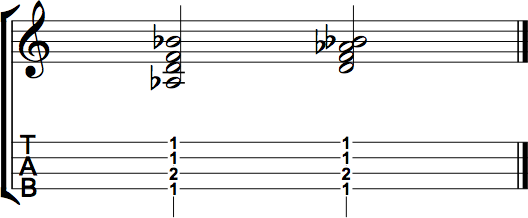
Gvariations
Additional Information
Bb7 is a movable version of the open position A7 with the root on string one.
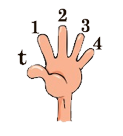 Although additional fingerings are possible for many chords, fingering for any given chord depends on the science of how our fingers work and on the harmonic context the chord is being used in—what was the previous chord, and what's the next chord? The goal is to play all the notes right behind the frets when possible. Remember, longer fingers can reach the lower strings better, and finger two can stack on finger three, and finger three can stack on finger four.
Although additional fingerings are possible for many chords, fingering for any given chord depends on the science of how our fingers work and on the harmonic context the chord is being used in—what was the previous chord, and what's the next chord? The goal is to play all the notes right behind the frets when possible. Remember, longer fingers can reach the lower strings better, and finger two can stack on finger three, and finger three can stack on finger four., A barre of finger one is the most functional fingering with this movable form chord.
- 1-3-1-1

7th (pronounced Seventh)
A partial seventh chord can be created by lowering the Root of a major triad two frets.
A seventh chord as a 4-part chord ( 1 3 5 b7 ) and one of the Big Six core chords used to derive other contemporary and jazz chords.
A Seventh chord along with your basic major and minor chords are the msot common chord you will encounter.
NOTE: A Seventh chord is very often referred to as a Dominant Seventh . This is not always accurate as Dominant — is a chord function and not actually part of a chord name, which is a capital letter and chord type information – not it's harmonic function. We don't call a seventh functioning as a I (one) chord in a Blues a Tonic Seventh or the IV (four) chord a Sub-Dominant Seventh chord, etc...
Related Lessons, Videos, Lesson Series, Songs, Books & Reference Charts, Resources & Assets, Workshops are below.

Core Chords for Ukulele, The Big Six - From four F7 chord voicings or shapes, your can build your massive 4-part, a.k.a., “jazz” chord vocabulary. Beyond basic open position chords, basic movable form chords and a core set of 4-part chords. There are just too many chords shapes too memorize.
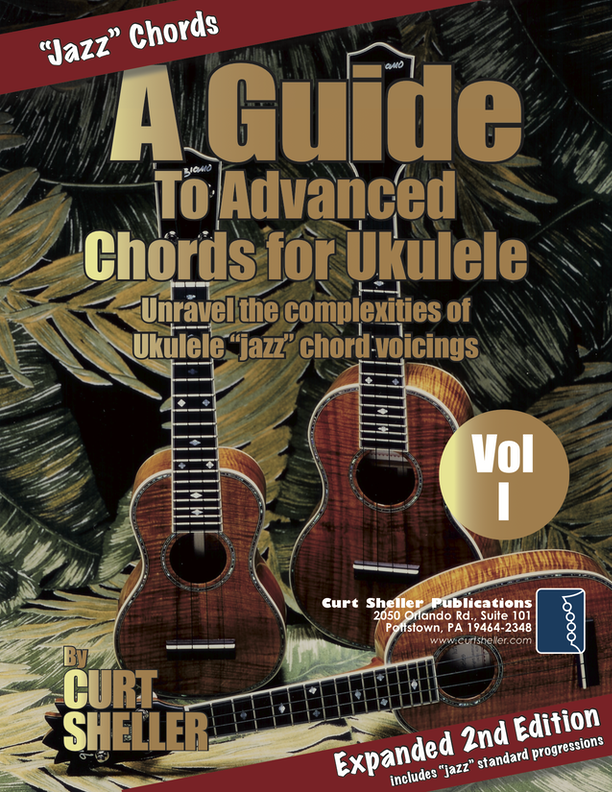
Beyond learning basic Ukulele chords, most players struggle with advanced chords. Commonly called "jazz" chords, these more sophisticated voicings find a wide use in all forms of music. A Guide to Advanced Chords for Ukulele - presents a highly organized and efficient approach to the mysterious subject of advanced chords. Chord dictionaries are not the answer.

Covering basic ukulele chords that ALL uke players MUST know, movable chord forms, rock uke chords, how to transpose chords, learning the ukulele fingerboard and an introduction to 4-part jazz chords and more... FOR LEFTIES - Tunings: C, G, or D Tunings. Low or high string four variations.
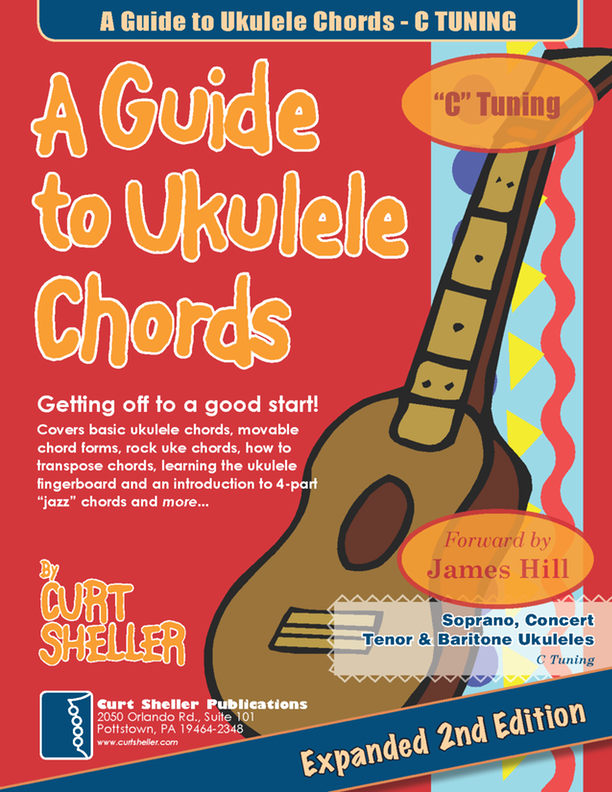
A Guide to Ukulele Chords, Second Edition is designed as a guide to ukulele chords. Covering the basic ukulele chords that ALL ukulele players SHOULD know. A Guide to Ukulele Chords covers movable chord forms, rock chords, how to transpose chords, learning the ukulele fingerboard and includes an introduction to 4-part, a.k.a jazz chords and more...

Finally, learn the names of the notes of the ukulele fingerboard in C tuning .

Learn the six fingering principles to navigating the ukulele fingerboard. Fingering is one of the most universal topics. Book: Six Secrets of the Ukulele Fingering

Harmonic Analysis is the understanding of the functional sequence of chords. It is the process used to analyze the harmonic structure of a progression, song or composition. Book: Harmonic Analysis for Scale Selection and Chord Substitution

Learn to read single note melodies in the first/open position is a lot easier than you might think. Book: Ukulele – Reading Music Series – Primer

An organized collection of daily practice and reference material for the contemporary ukulele player for developing the vocabulary and knowledge necessary for single note playing. Book: Daily Practice Material for the Contemporary Ukulele
Checkout the Books & Reference Charts for additional Handy, Dandy Reference Charts.

Ukulele Fingerboard Chart for C Tuning, Low or High G – G C E A

Ukulele Fingerboard Chart for G Tuning, Low or High A – D G B E

A handy reference chart of all 15 major and relative minor key signatures. US Letter 8.5 x 11 sized (ANSI-A), A4
Checkout the Books & Reference Charts for additional Handy, Dandy Reference Charts.




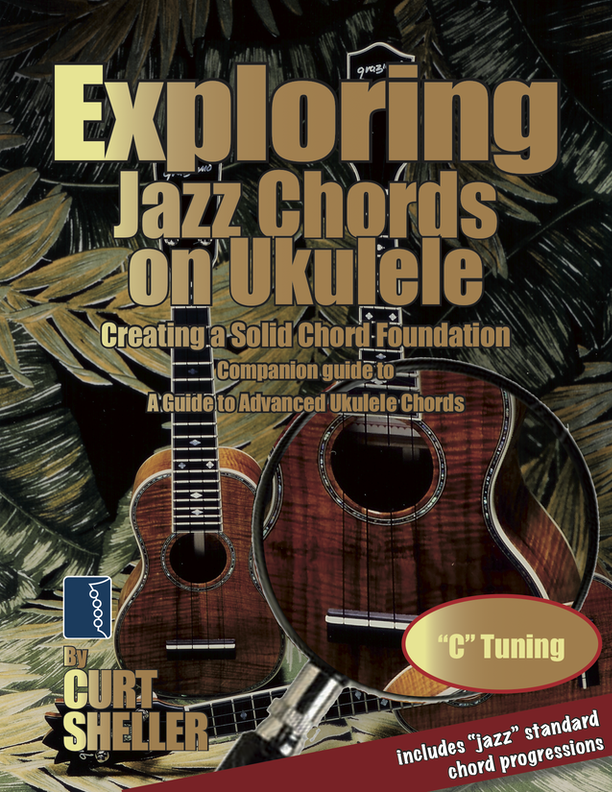
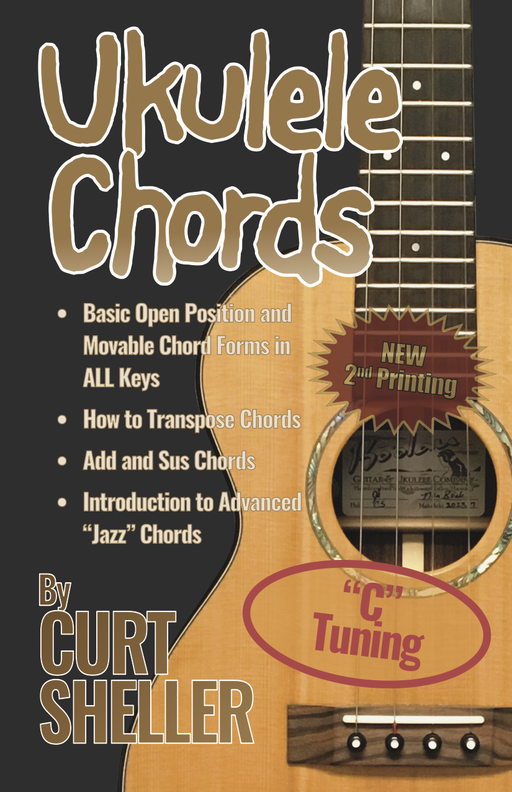
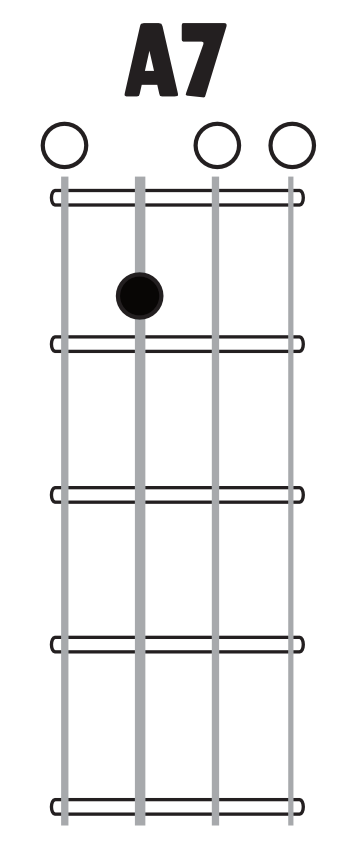
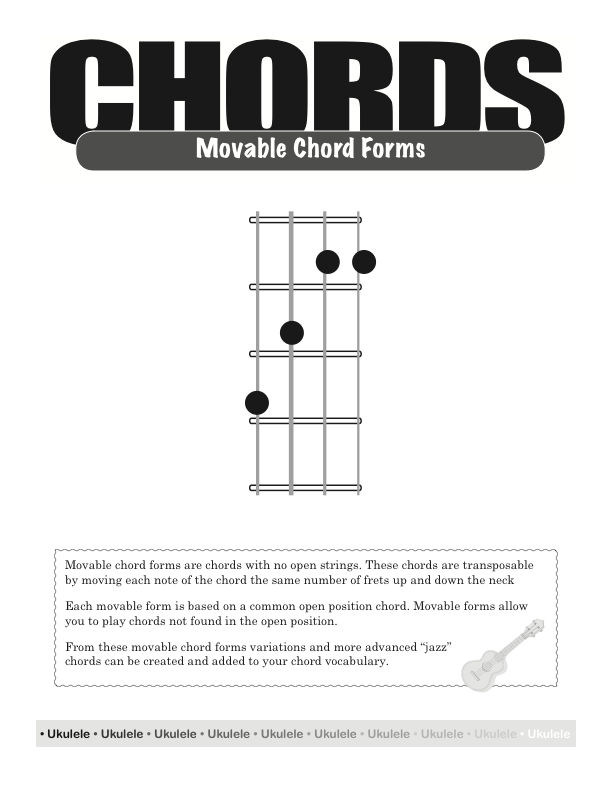
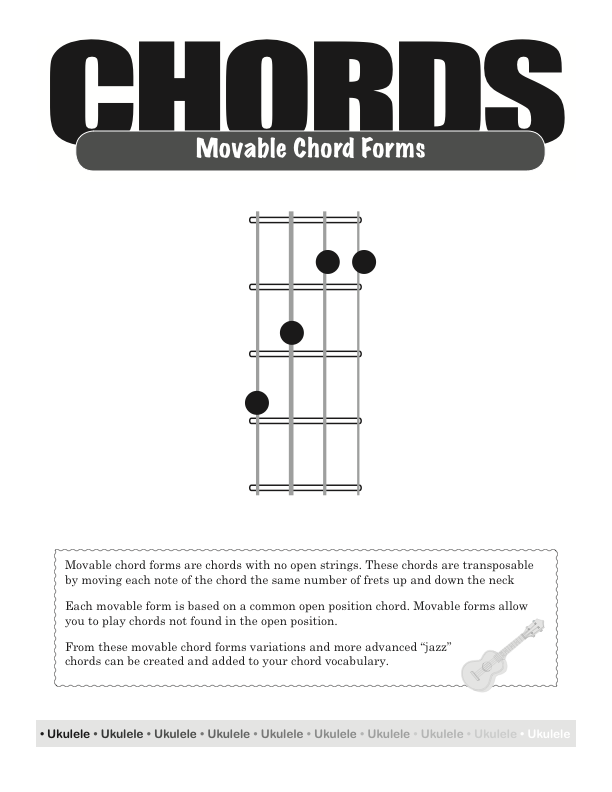
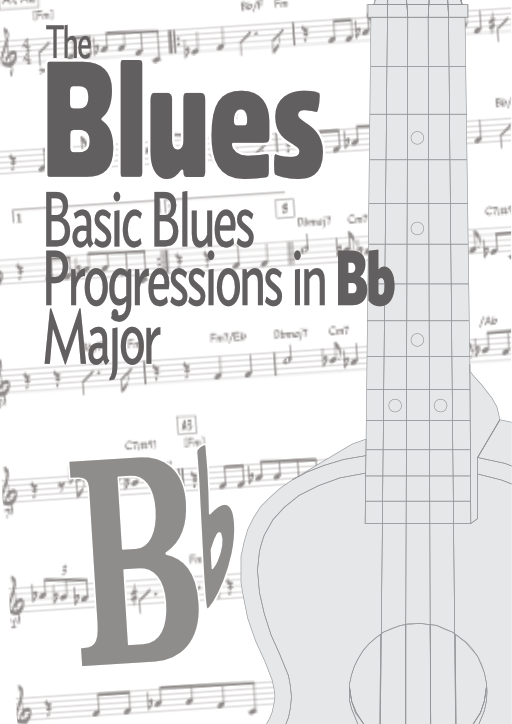


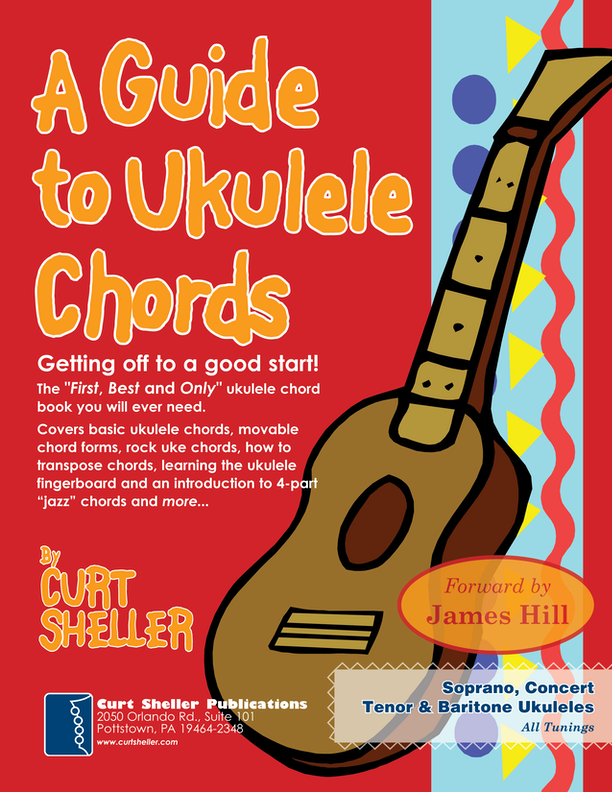

.jpg)